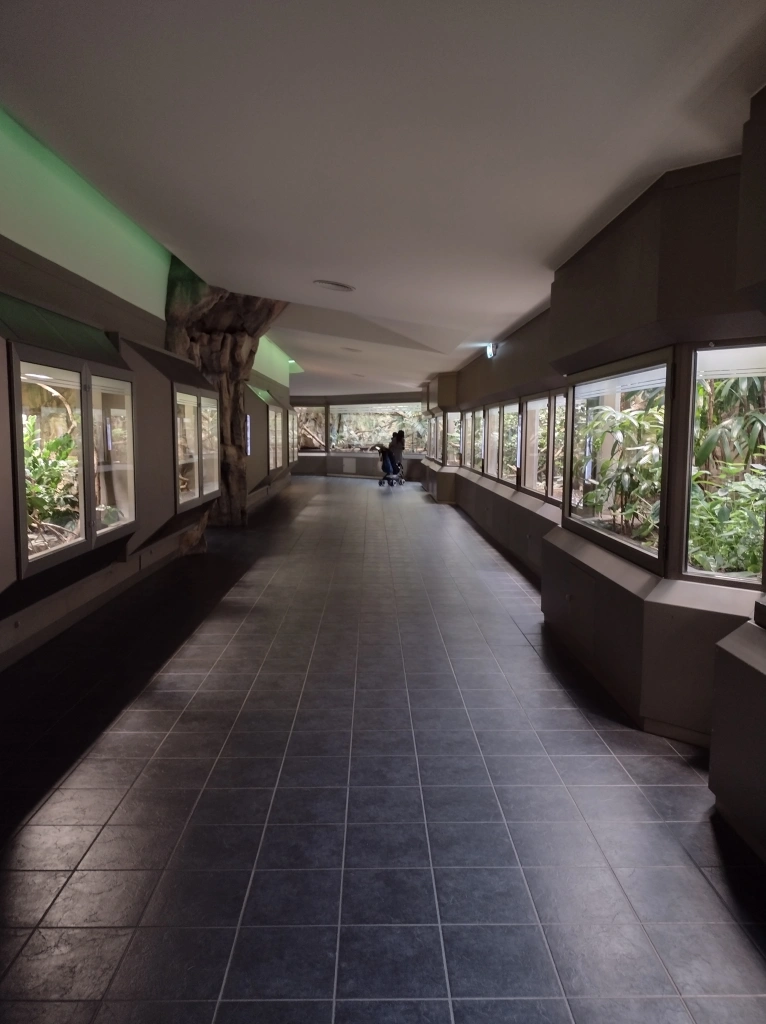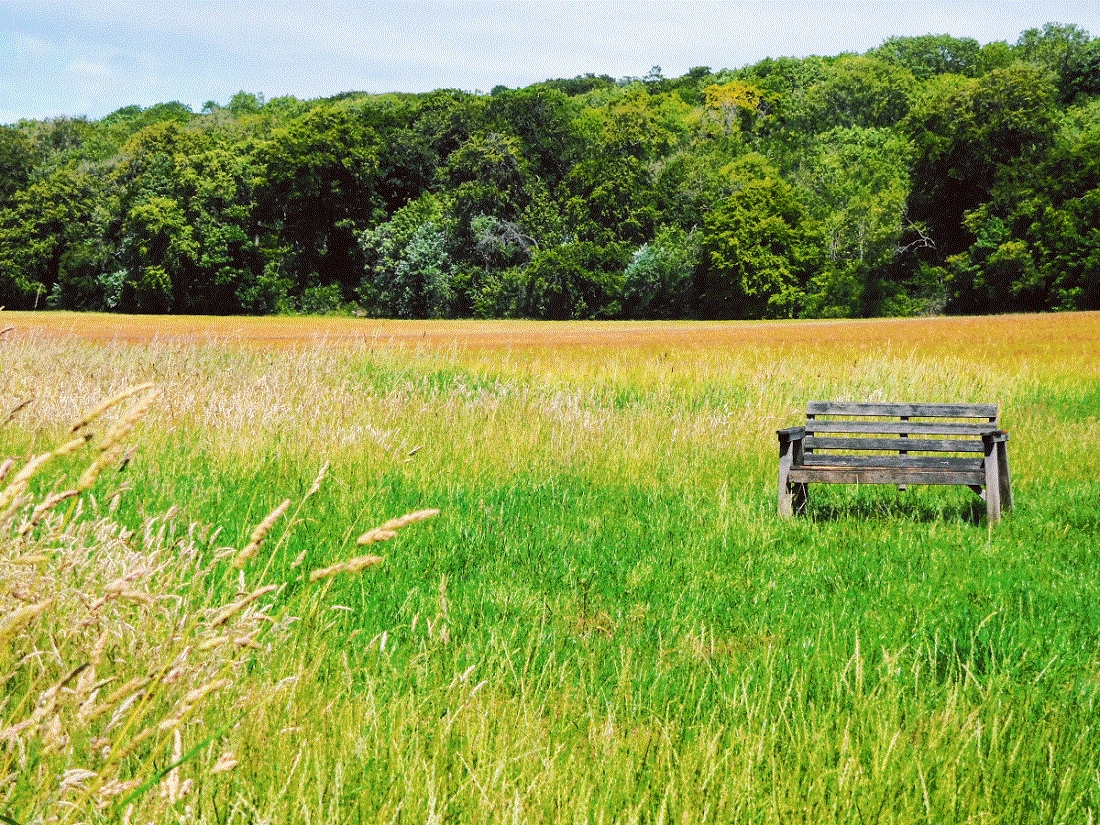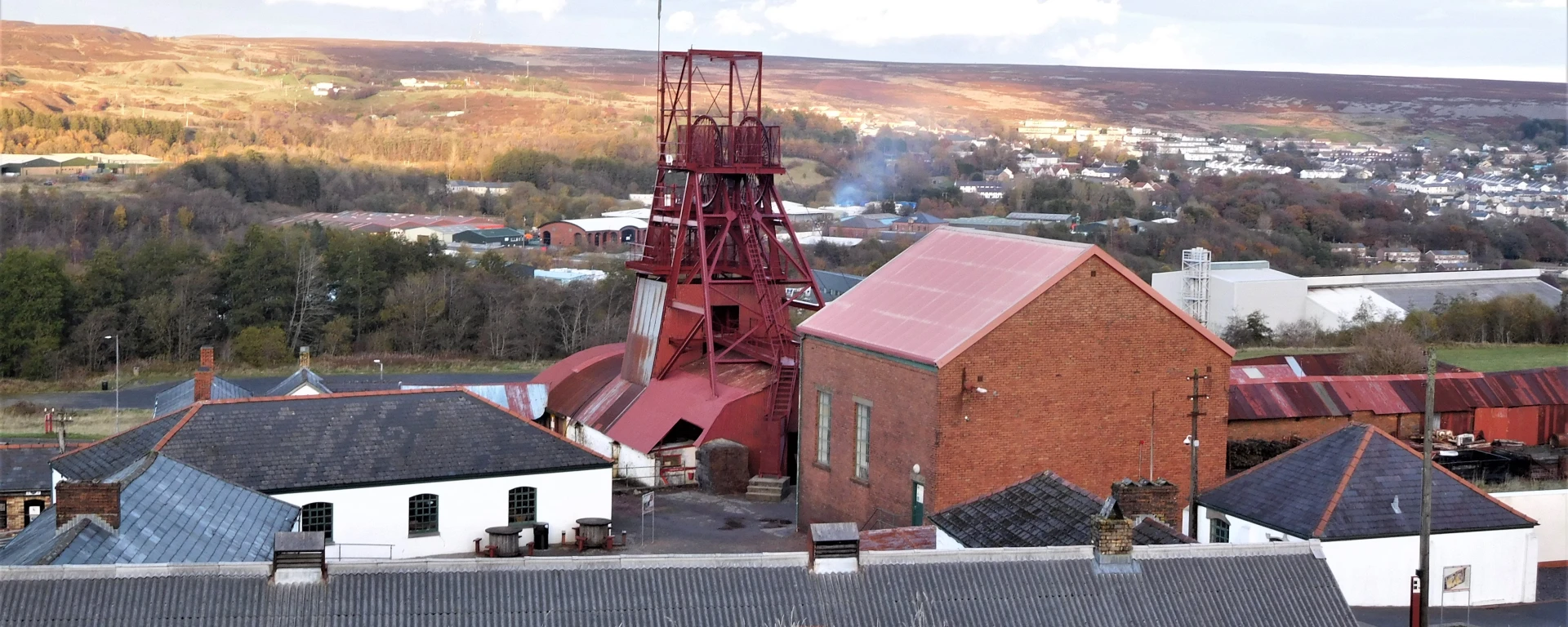Hi my lovely readers!
Situated on the banks of the river Thames on the outskirts of London sits one of the great, if not the grandest Stuart houses in England – Ham House.
Mostly unchanged and displaying a fine collection of art, furnishings and fabrics collected by the Duchess of Lauderdale and her descendants over 400 years, Ham House is a great place to learn more about the history of England and find out how the rich and influential used to live and entertain their guests in the 17th century.
Ham House is a short stroll away from Richmond, which by the way is a lovely area with lots of cafes and pubs by the riverside, shopping, markets and of course Richmond Park. It’s definitely a lovely part of London worth exploring.
And if that doesn’t convince you to visit Ham House then maybe you are curious to visit one of the most haunted houses in Britain. Apparently it has been reported that guests smelled the sweet Virginia pipe tobacco the Duke used to smoke in the dining room after meals as well as spotting ghost in the kitchen.
Either way, Ham House certainly is an interesting Stuart home to visit and the gardens are a place of calm in the busy city of London.
Ham House – A Grand Stuart House And The Most Haunted In Britain
BRIEF HISTORY
Ham House was originally built in 1610 and gifted by King Charles I to William Murray and his daughter Elizabeth, who was educated together with the King as a young boy, remaining friends all the way into adulthood and loyal to the King.
Both William and Elizabeth left their mark and transformed Ham over the years into what it’s today, a grand 17th century home.
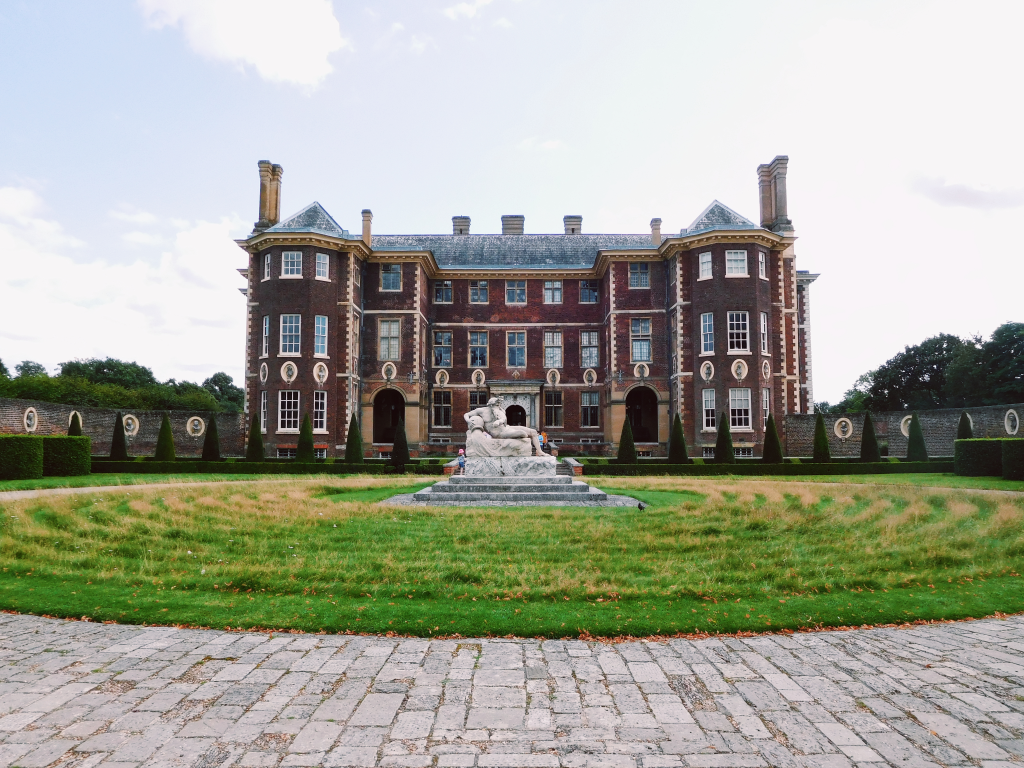
You see, in 1624 the English Civil War broke out and William fought alongside Charles I against the Parliamentarians as a royalist. The royalist lost the war though and Charles was captured and later beheaded in 1649. His son Charles II together with the Scots came to an agreement to be crowned Charles II of Scotland. However, he failed to take back the English throne and fled to mainland Europe.
A few years later in 1653, Oliver Cromwell was appointed Lord Protector of the Commonwealth. These were difficult times for royalist as many were stripped of their land, assets and properties. But Elizabeth, who then was the owner of Ham, build a good relationship with Cromwell and used her wits to influence him and save Ham, while all this time remaining loyal to Charles II and sending him secret messages informing him about current affairs in England.
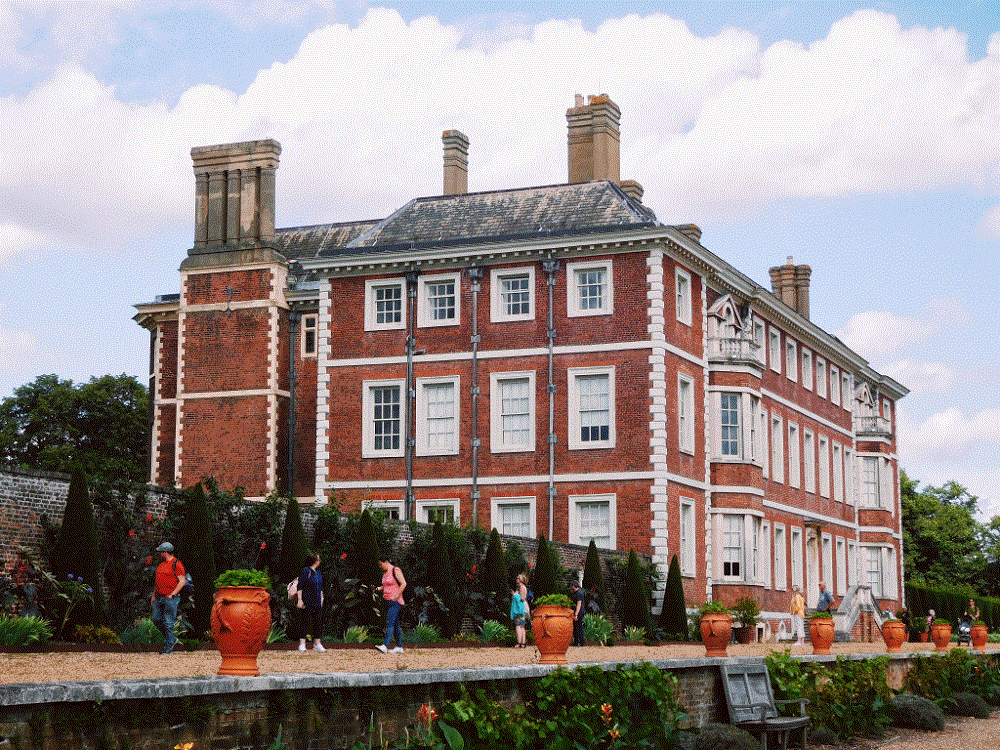
Charles II eventually returned back to England and his power was restored in 1660, meaning Ham could be openly and freely used as a place for entertaining influential and important guests and aristocrats once more.
After Elizabeth’s death, Ham remained in the family for the next 300 years, changing little over time until it was placed in the care of the the National Trust in 1948.
THE HOUSE
When entering Ham House, you step right into the Great Hall and the first thing you will notice is the beautiful and original 1610 black and white marble floor as well as the oval shaped ceiling that can also be admired from the Round Gallery one floor up used to entertain guests before dinner.
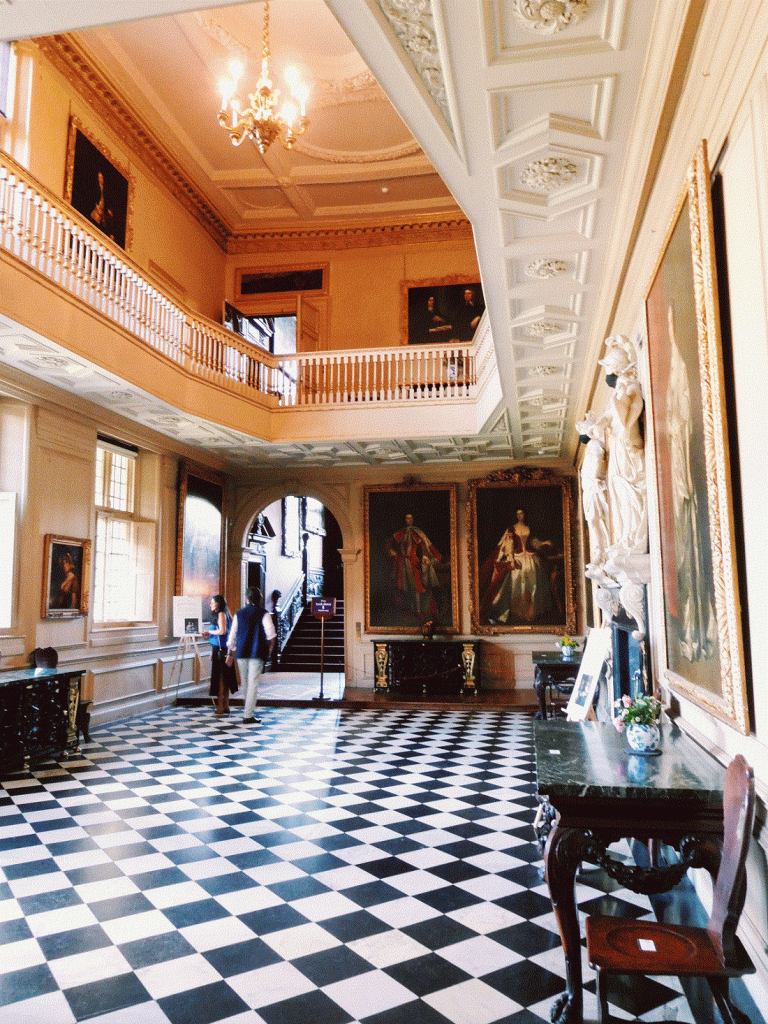
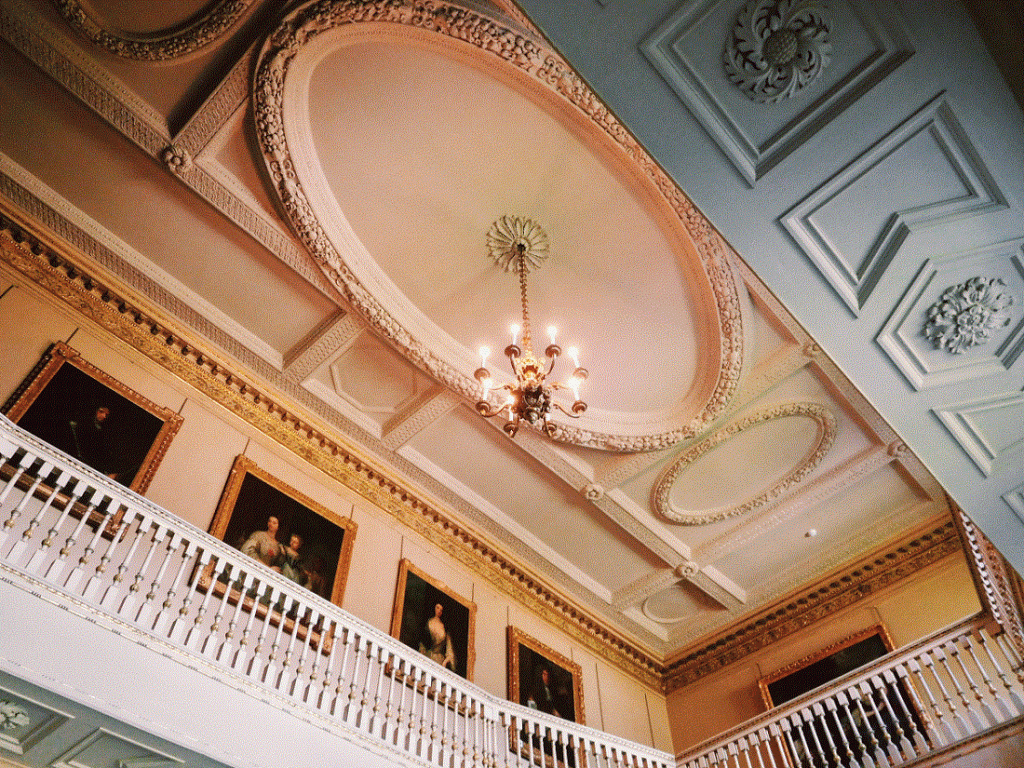

From the Great Hall you can head to the left to walk up to reach the next floor using the marvellous wooden Great Staircase. It’s one of the most impressive staircases I have seen in a long time with the balustrade panels depicting trophies of arms. The detail is so intricate and beautiful and it certainly is one of my favourite features of the house.
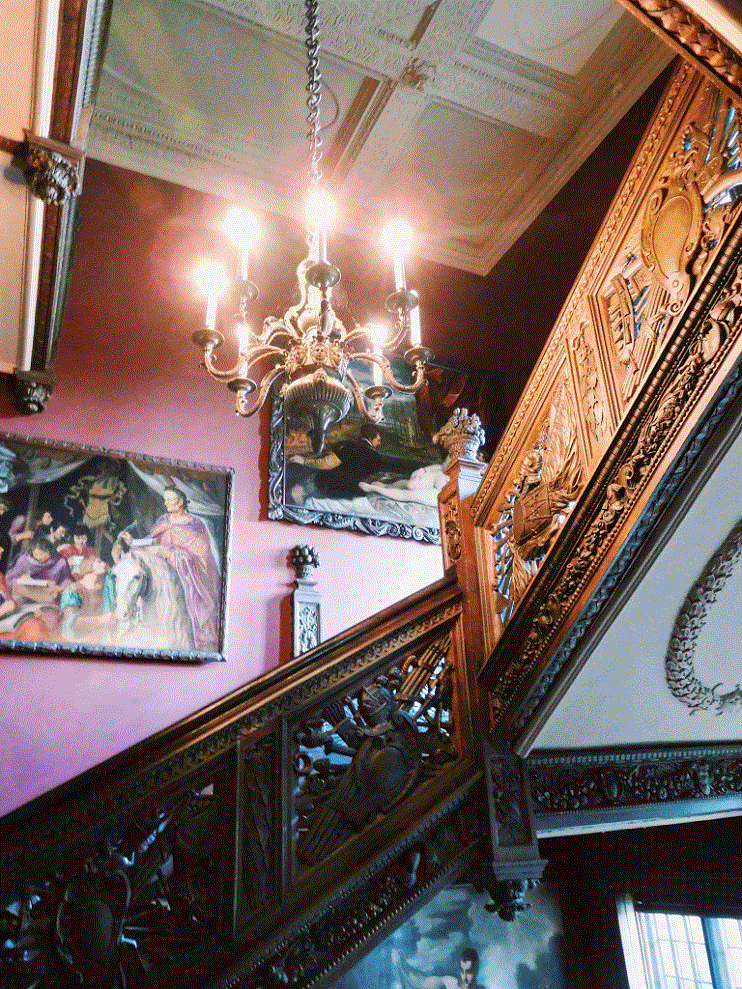
Of course the living quarters including bedrooms, closets, dressing rooms and such are open for viewings, which are richly decorated with wall hangings, tapestries and of delicate cabinets and chairs.
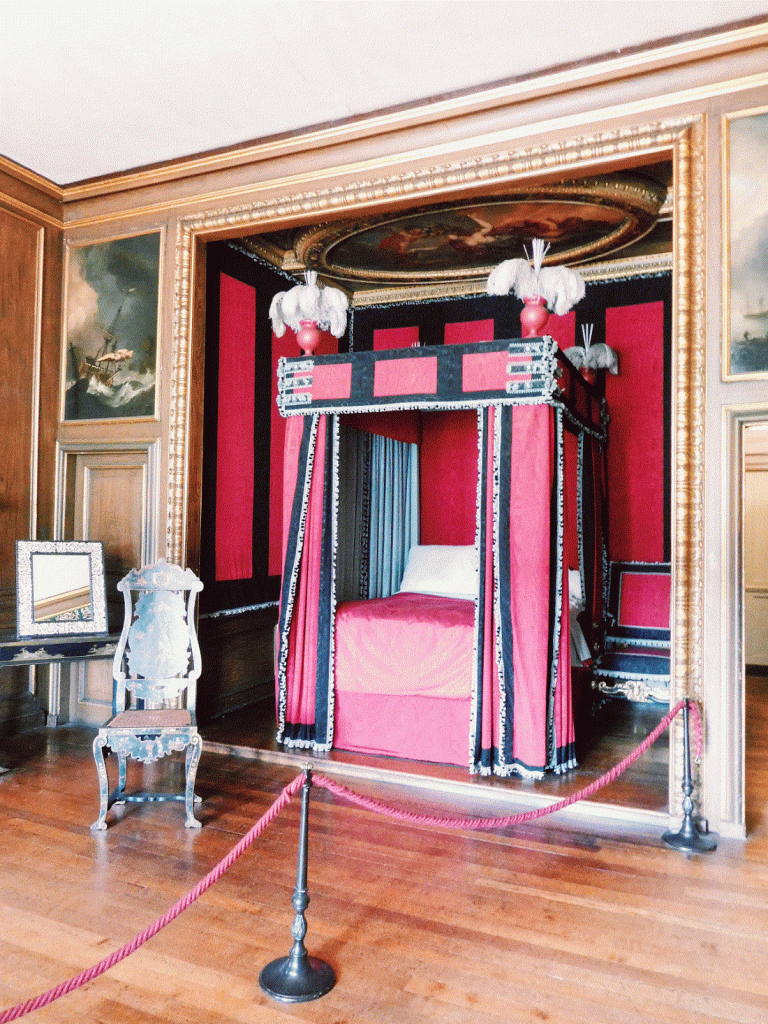
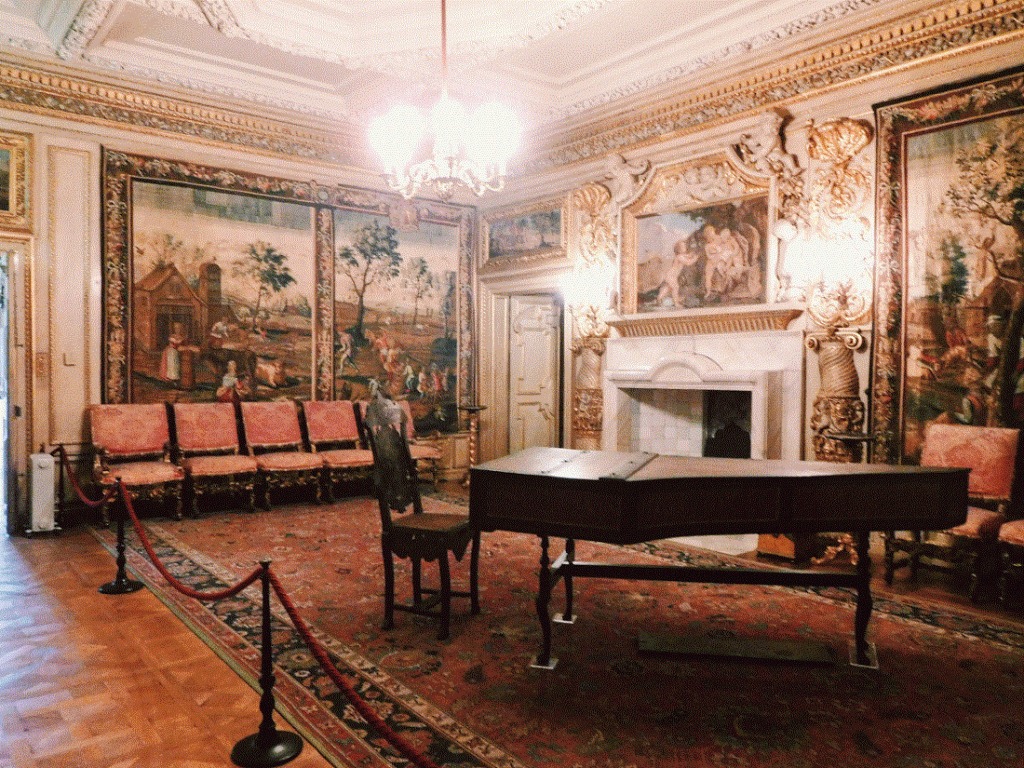
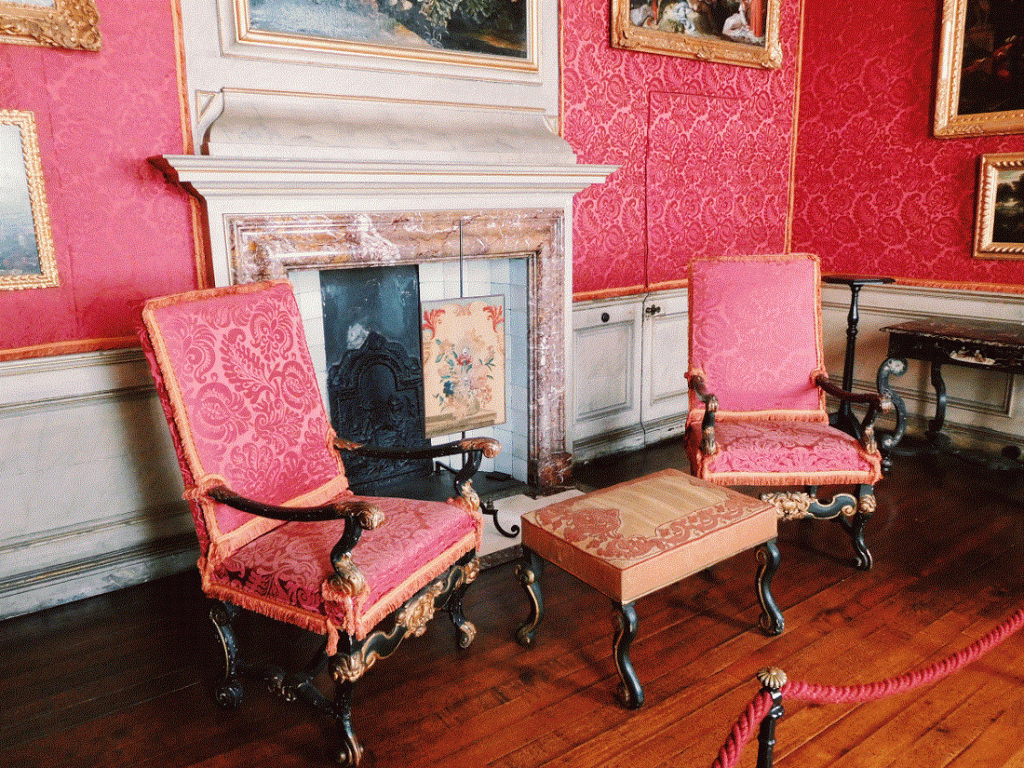
Another room, which I really enjoyed viewing is the Long Gallery lined with portraits of family members and important connections such as King Charles I. This room makes for a change in scenery as it’s painted in black and gold and very different to the rest of the rooms in the house. The Long Gallery was used by the family to exercise and play games, sort of like their own indoor gym, just a bit more noble.

Downstairs the basement looks a bit more simplistic as the servants would have spent the majority of their time here in the kitchen, Beer Cellar and of course the servants quarters.
However, one of the surprising rooms in the basement must be the Duchess’ Bathroom, her own personal spa. In fact, it’s one of the oldest purpose-built bathrooms in England and you can learn more about bathing rituals and the use of flowers including lavender in them.
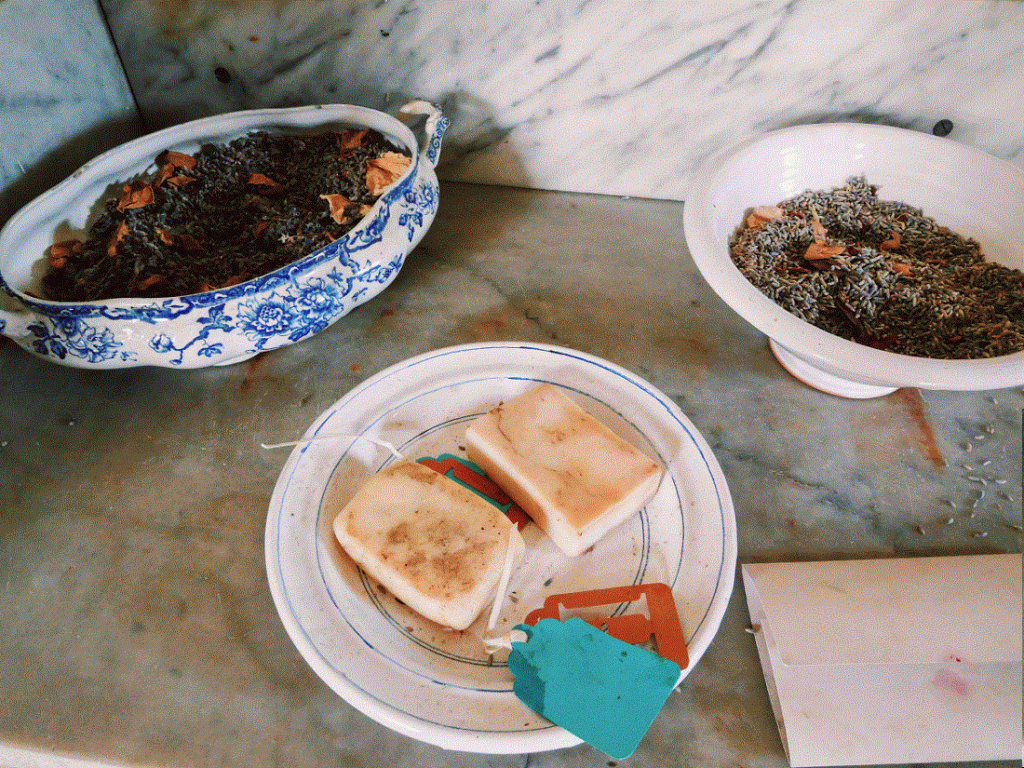


The basement concludes the house tour and leads you right to the shop, toilets and the gardens. There’s no timed entry to the house so it’s totally up to you if you want to explore the house first and then the garden or vice versa.
THE GARDENS
Although more or less in the city, Ham offers many different, varied and tranquil outside spaces and a small assortment of gardens.
To the right of the house is the Fountain Garden, a wild flower meadow with a small orchard for insects and bugs to thrive. It was literally buzzing when I had a peak and wander around.
Alongside the meadow, herbs and medicinal plants are currently growing with little signs explaining what they’re used for and what little aches and pains they can cure. Sometimes going natural is better and that little corner of the garden certainly gave me some great ideas and inspiration.


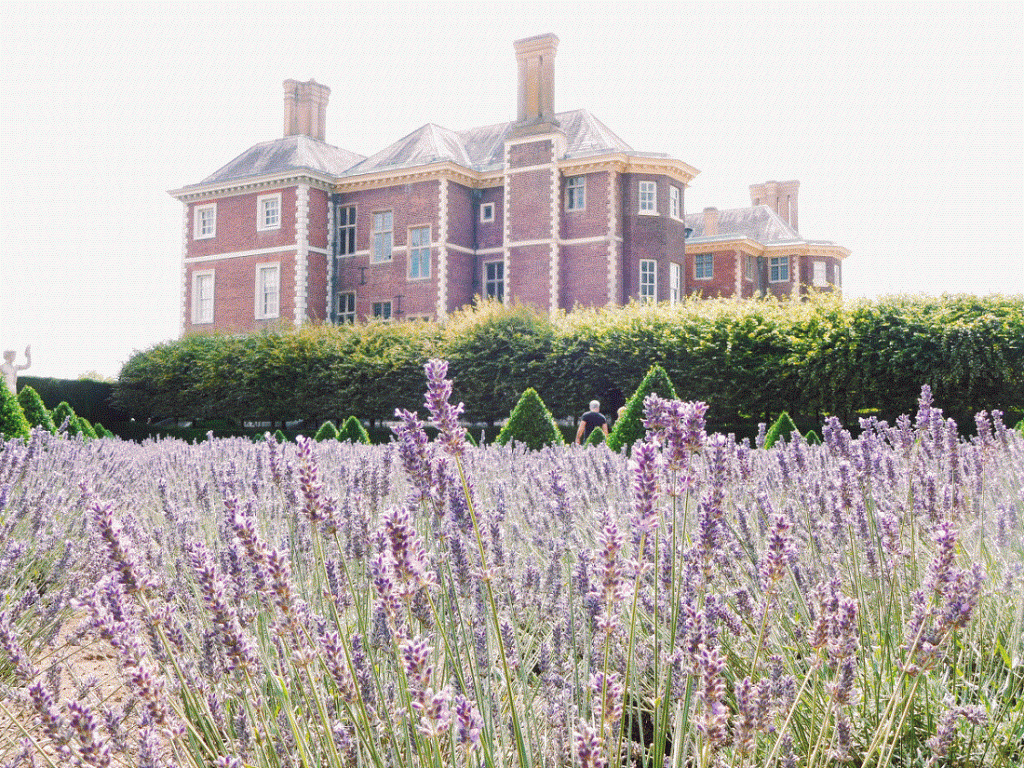
The so called Cherry Garden is located to the left of the house. I say so called as that garden patch is actually decorated with around 1200 lavender plants. I was expecting tons of cherry trees, but these have been relocated and now form part of the edge along with the hedges forming the border of the Cherry Garden.
Right now the lavender is in full bloom and the plants have this rich purple colour, which is absolutely stunning and it just smells amazing. Look out for the statue of Bacchus, the god of wine, which is an original 17th century piece from the house.

Ham is surrounded by different gardens all serving a unique purpose and to the back of the house is the Plats and Wilderness. The Plats are rather unexciting as there isn’t much growing on them. They are just some squares of lawn.
However, they make for perfect picnic spots as you get a really good view of the house. If you wonder just a tiny bit further you get to the Wilderness, a nice shady area with lots of trees and lovely seating areas.
My favourite garden out of all of them was the Kitchen Garden though with the Orangery Cafe next to it. The Kitchen Garden features different flower beds, a variety of fruit trees such as apricots and apple, all sorts of veggies ranging from lettuces to squash and so much more. The Kitchen Garden would have fed the whole household back in the days and today the area bursts with produce once more.
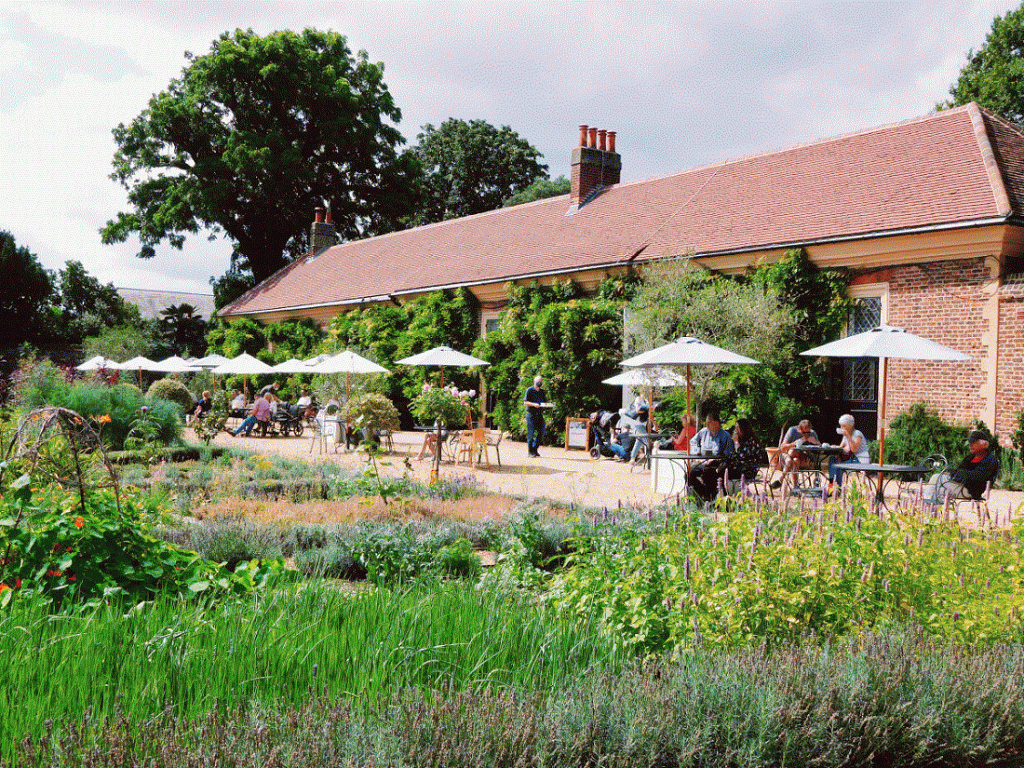
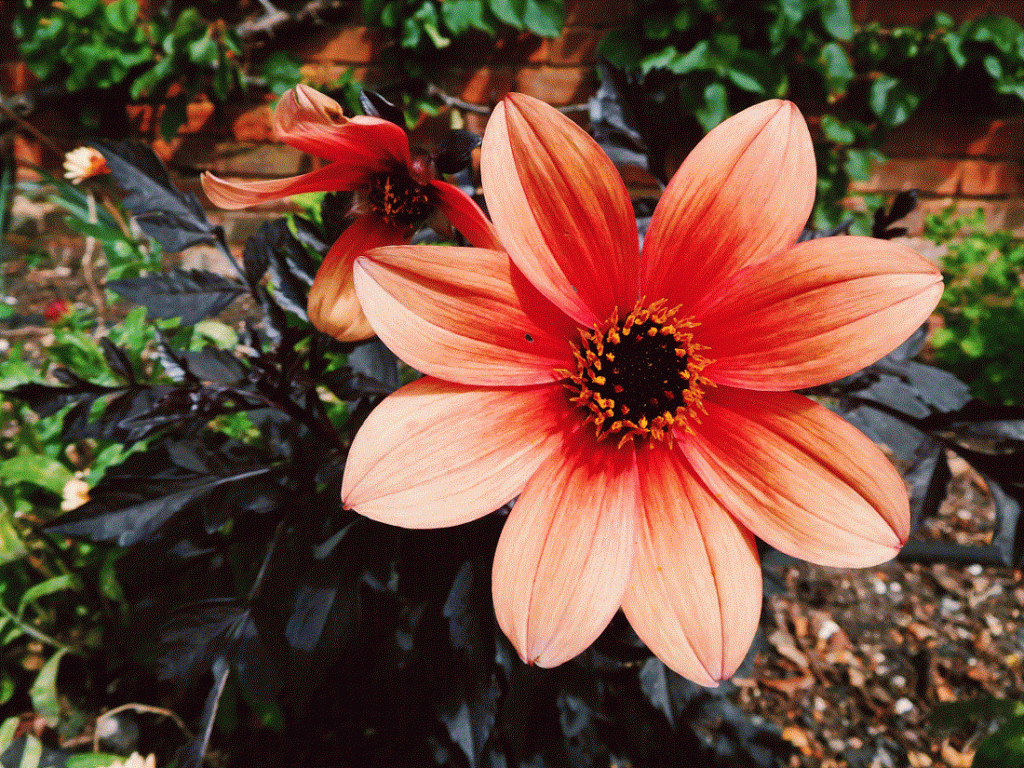
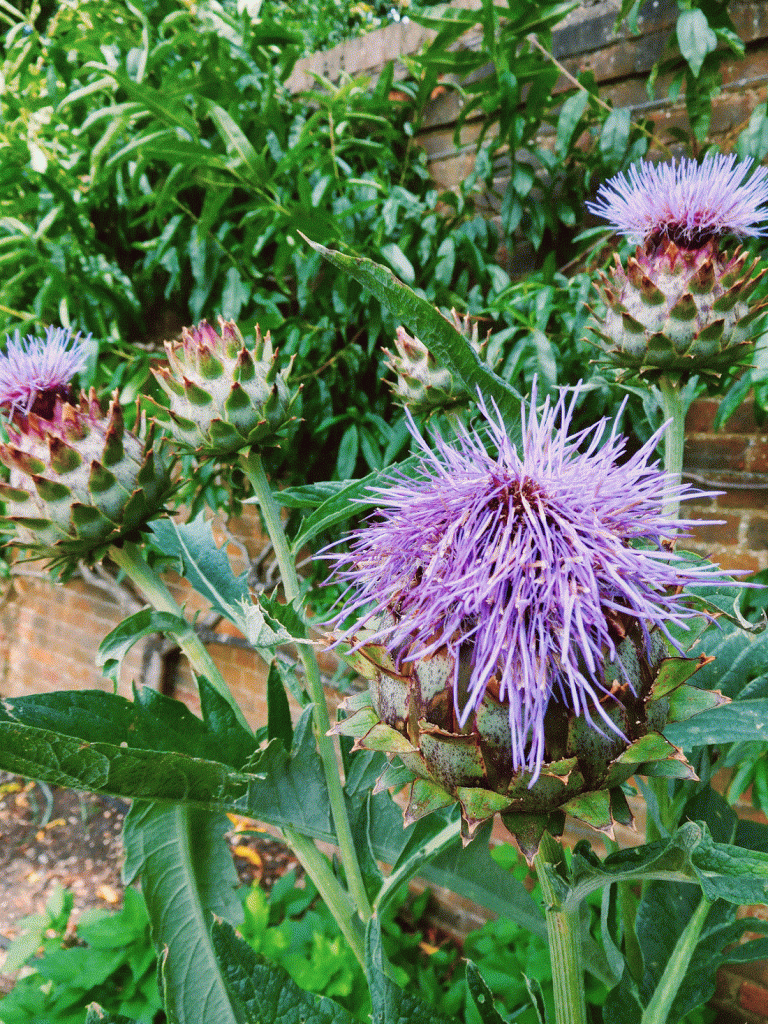
It was a joy walking around the colourful beds, seeing what the garden would have been like and what crops they were growing and ending up in the Orangery Cafe where I treated myself to a yummy fruit scone with clotted cream, jam and a cappuccino.
The Orangery Cafe is in the Kitchen Garden and there’s a lovely terrace outside where you can sit and enjoy some lunch or tea, while overlooking the garden, which is precisely what I did 🙂 I can’t express how nice this was.
Enjoying one of the the last summer days this year, sitting outside on that terrace taking in the view of the Kitchen Garden while eating my scone. It was heaven.
FINAL THOUGHTS …
This was my second visit to Ham House and it was even better than the last one as the gardens are in full bloom right now in August, which definitely enhances the experience.
The house of course was as equally impressive as last time and I’m always curious to find out how people used to live back in the days and how furnishings and decorations have changed over time, which I personally find fascinating.
Ham House is very different from other National Trust houses I visited such as Chartwell as it represents a different era, it’s much older and it retaining many of its original features is really special.
The garden might not be as landscaped as some of the other houses, but I adored and was quiet taken aback by the Cherry Garden aka the lavender garden as well as the Kitchen Garden.
If you ever visit Ham House in the summer, definitely make time to have a slice of cake or two from the Orangery Cafe, because it’s delicious and enjoy it in the Kitchen garden. It’s bliss as the setting just can’t get any better.
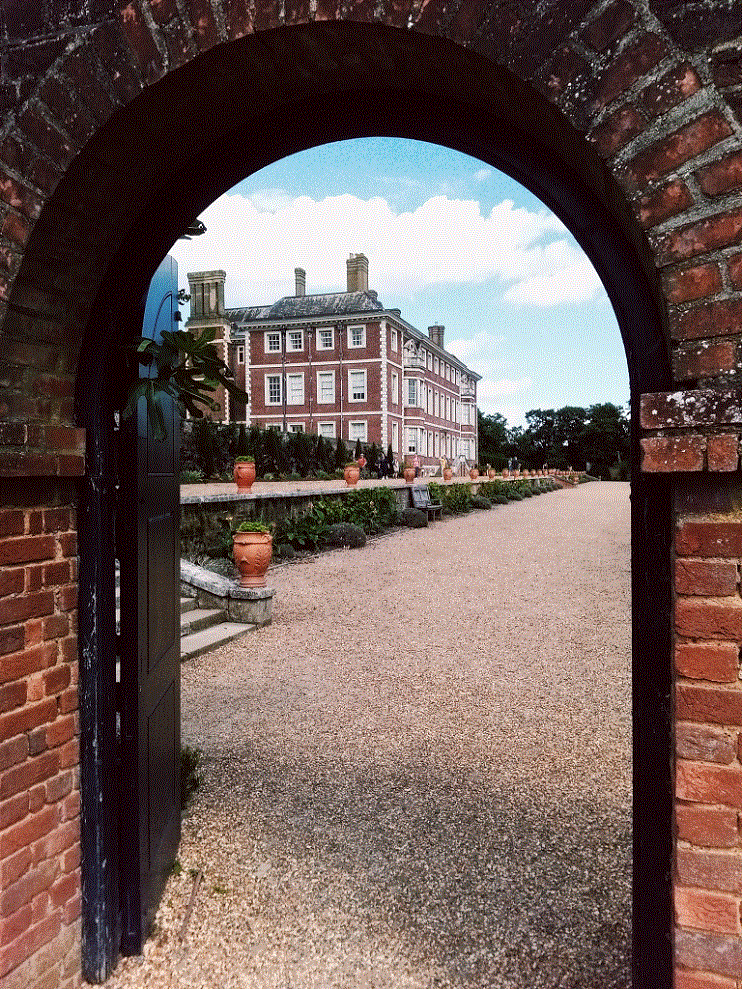
- Opening times: House 12 – 4 pm, Garden 10 am – 5 pm, Cafe and Shop 10:30 am – 4:30 pm
- Admission: Adults £13, Children £6.50, Free for members
- For more information please visit: Ham House and Garden
- How to get there: By car – Ham Street, Ham, Richmond, Surrey, TW10 7RS. By Train – The closest train and underground station is Richmond. Ham House is a short 1.5 miles walk away located along the South bank of the River Thames.

